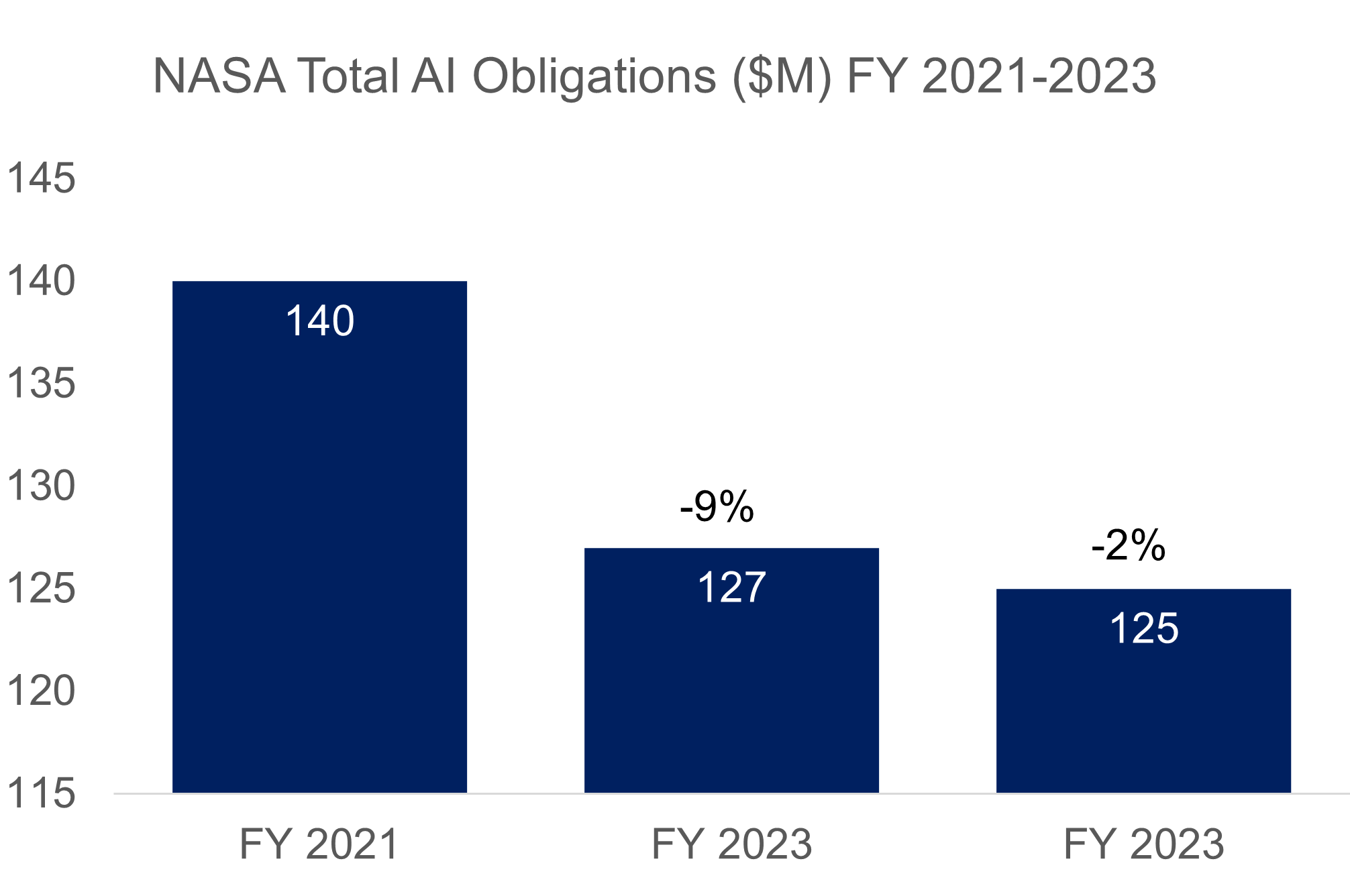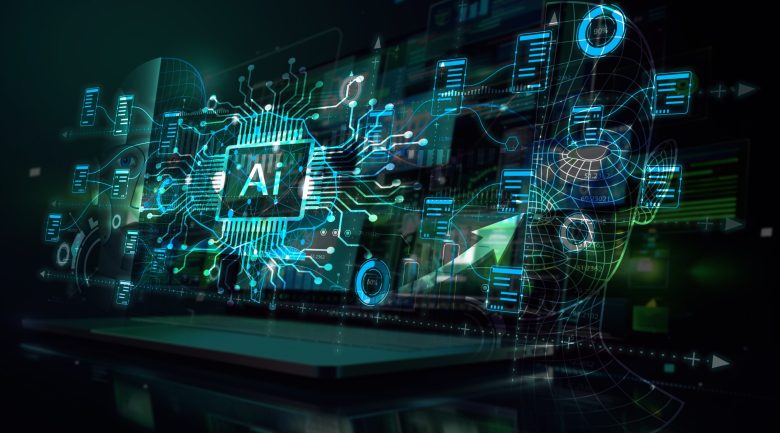Over the next five years, NASA’s AI investments are expected to increase by about 26% as the agency focuses on space missions, management process improvements, high-performance computing, and weather-related research and development (R&D).
Between FY 2021 and 2023, the space agency led the federal civilian sector in Artificial Intelligence investments with $420M in federal contract awards despite steadily declining budgets. NASA also reached a five-year record high in small business (SB) utilization during FY 2024 with $610M (17.2% of its budget) awarded to small businesses as of September 30, 2024. This included $96M for AI. (Final numbers are not available.) During this period, NASA’s AI spending mostly occurred in R&D projects, but work was also embedded within multiple information technology projects.

However, while R&D remained the largest investment between FY 2021 and 2023, $75.4M based on NAICS Code reporting, the investment landscape appears to be shifting slightly. The agency’s top 5 NAICS codes during this time were:
- 541715 – Research and Development in the Physical, Engineering, and Life Sciences (except Nanotechnology and Biotechnology)
- 481212 – Nonscheduled Chartered Freight Air Transportation
- 541712 – Research and Development in the Physical, Engineering, and Life Sciences (except Biotechnology)
- 541519 – Other Computer-Related Services
- 511210 – Software Publishers
From FY 2021-2023 overall R&D increased by 36%, while computer-related services spending grew by 79% and software development 68%. This is likely due to NASA’s transitions to utilization and implementation processes.

Future Expectations:
Looking ahead, NASA’s FY 2025 includes $629M for IT modernization including implementation of AI risk management. The agency’s AI-related strategic FY 2025 priorities include:
- Utilizing AI, cloud and robotic process automation to transform and enhance IT business services agency-wide to increase productivity and efficiency in daily tasks.
- Expanding the Digital Academy Platform providing agency-wide AI and data training to increase data acuity and optimize the technology utilization.
- Increased AI bot usage to manage internal operations through decreased backlog, accelerated onboarding activities, enforced compliance initiatives, and enhanced data retrieval and records destruction allowing users to focus on higher-priority work.
- Leveraging AI to design spacecraft and hardware to reduce production time, weight and mechanical risks.
- Continued development AI/ML Heliophysics capabilities for processing mission science data.
- Continued emphasis on NASA’s high-performance computing projects to provide AI dataflow processing for research into future advanced space systems driving impacts on energy and storage requirements.
Over the next five years, Deltek research indicates a steady increase in NASA’s AI spending to about $186M by FY 2028 providing multiple federal contracting and subcontracting opportunities. Firms embedded in the AI/ML market should prepare now to position themselves for successful outcomes. Small businesses seeking entry into the market should explore networking and small business programs such as the Small Business Innovation Research (SBIR)/Small Business Technology Transfer (STTR) programs as well as Mentor Protégé Program .
GovWin subscribers can access a more in-depth analysis including top contractors in the recent Deltek Federal Artificial Intelligence (AI) Market, 2024-2028 report.




